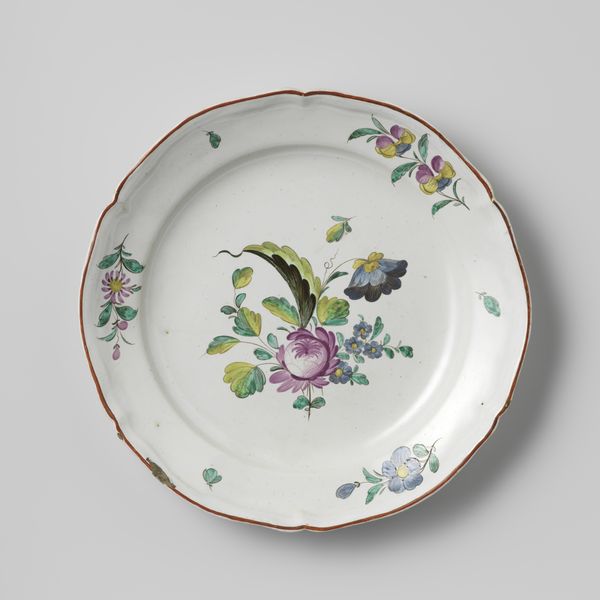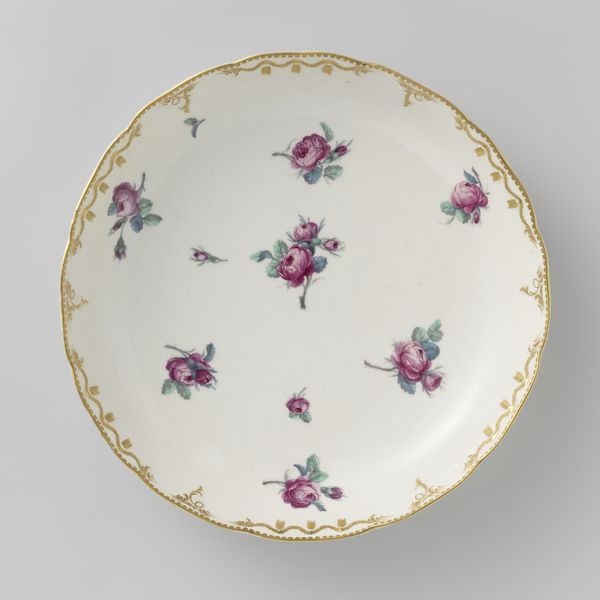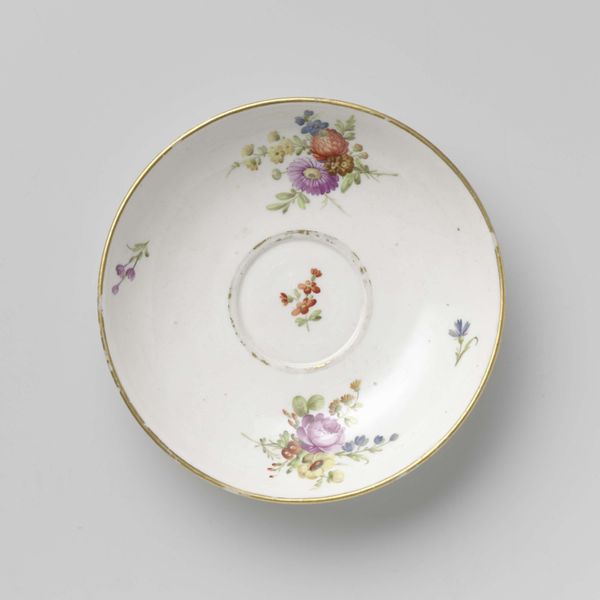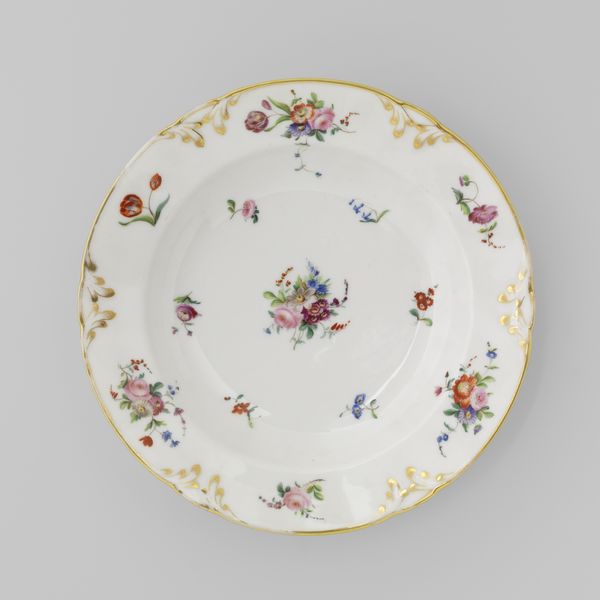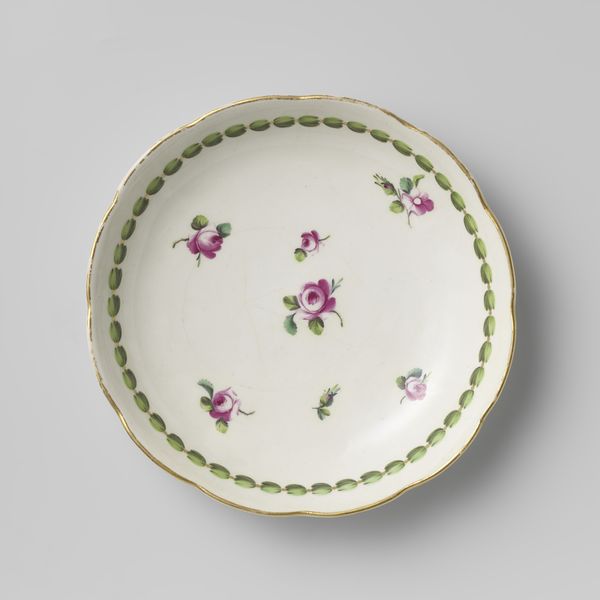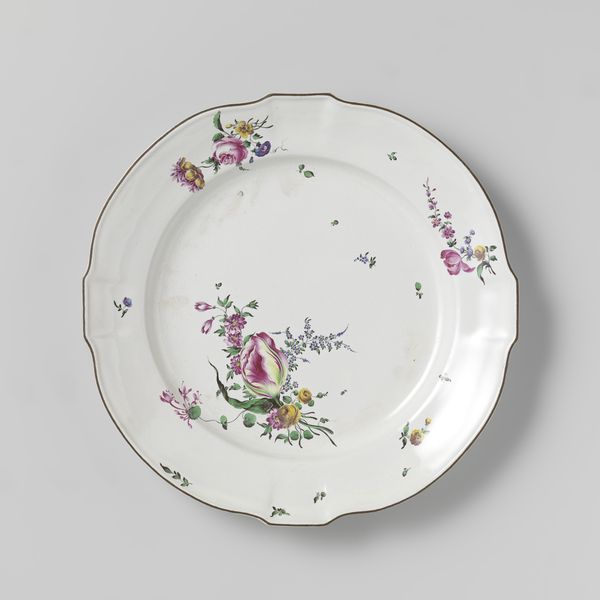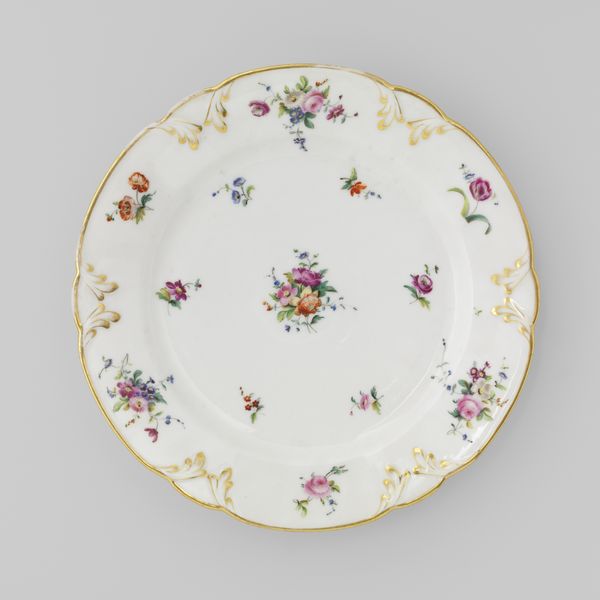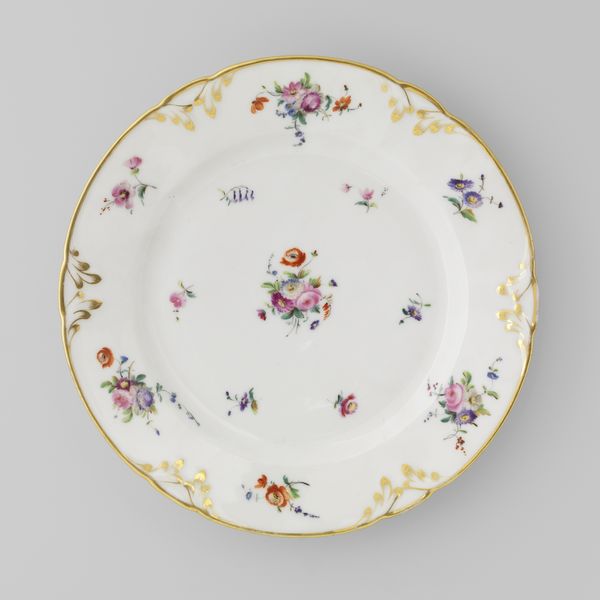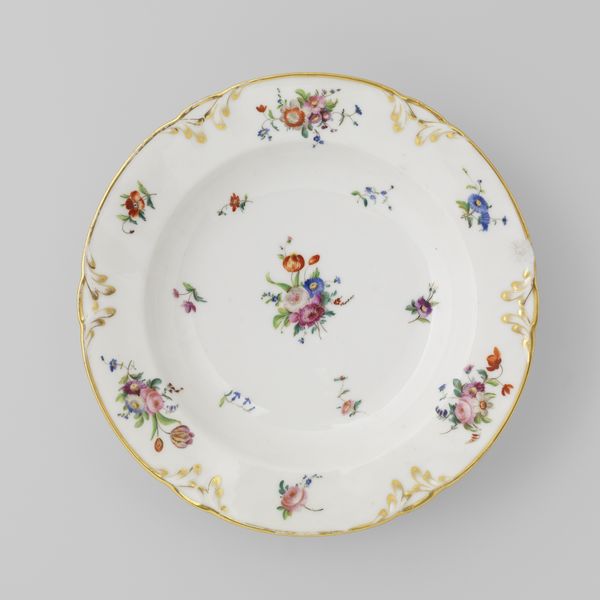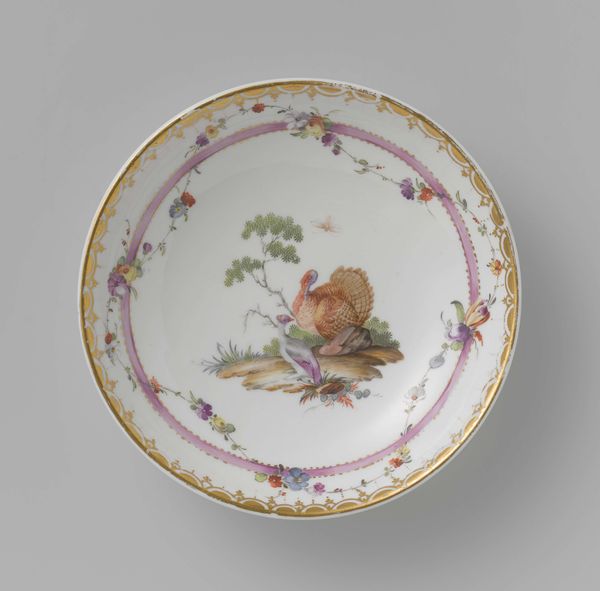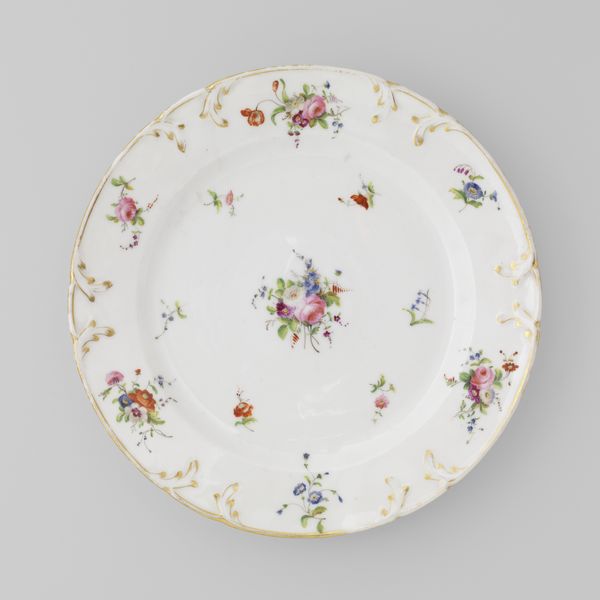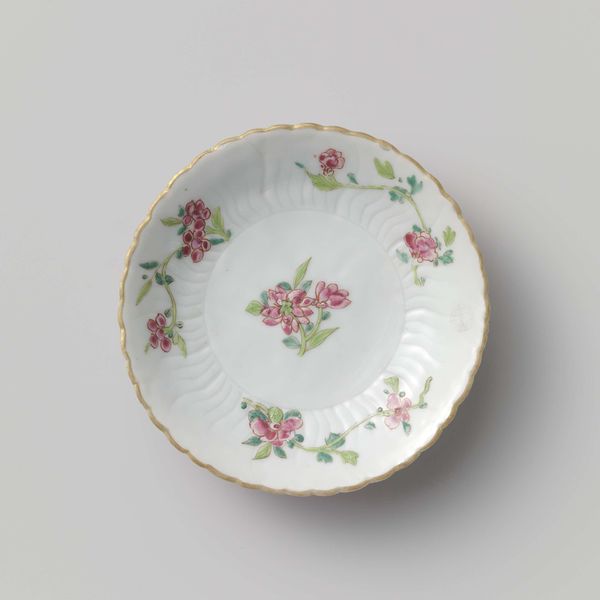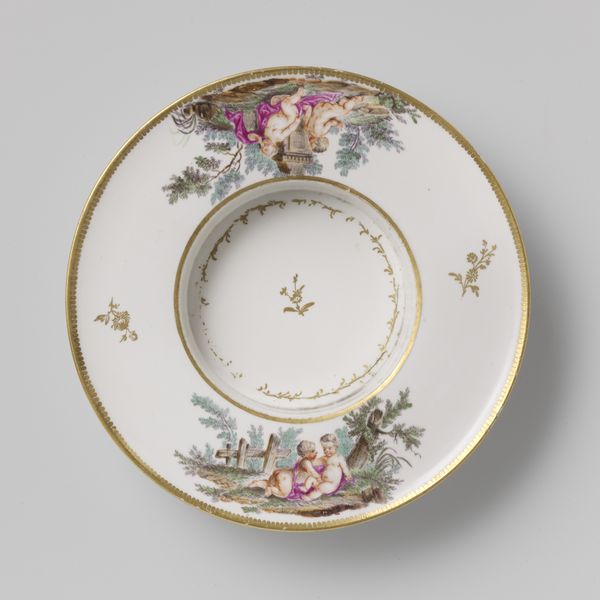
Dimensions: height 3.2 cm, diameter 13.3 cm
Copyright: Rijks Museum: Open Domain
Curator: Let's take a look at this lovely "Cup and Saucer" created by Porseleinfabriek Den Haag, dating approximately from 1777 to 1790. It's currently held here at the Rijksmuseum. Editor: My immediate reaction is to the exquisite delicacy. It's such a subtle scene, rendered with surprising earthiness for rococo. Is that… fungi, nuts, and some kind of tropical fruit? It feels unusually grounded in natural, consumable things. Curator: Exactly! This piece offers a glimpse into the relationship between artistic expression, consumption, and social class during that time. Porcelain, like this example, was not simply a utilitarian object; it was a marker of wealth and social standing. The detailed, hand-painted decorations, like this Rococo styled design, often depicted scenes reflective of leisurely pursuits or displays of knowledge. Editor: So the production and material is part of the status being demonstrated. And that connects, in my mind, to labor. The porcelain industry in Europe involved not only skilled artisans but also an exploitative system of resource extraction from colonized lands and the subjugated labor employed. The refined cup embodies these messy, deeply troubling contradictions. Curator: Certainly, we can't ignore that context. The Rococo style, even in its lightness, represents the privileges of the aristocracy, and that includes the exploitative structures needed to acquire raw materials and employ labor in this specific fashion. The symbolism within the image may speak to ideas of global trade as luxury display during the period of imperial expansion. Editor: It really encourages you to think about what stories a single object can convey! The cup and saucer become this material nexus that reflects larger systems of labor, exploitation, taste, and artistic movements across class and location. Curator: It demonstrates the necessity to engage with intersectional narratives that broaden our perspective of that era and our historical understanding of art. These types of items demonstrate ways to bridge art, culture, history, identity, and social studies to deepen our perspectives as individuals and as a community. Editor: Exactly. Viewing something as commonplace as this as a representation of multifaceted social connections helps bring visibility to social constructs, especially regarding marginalized people. That's something that really stood out for me.
